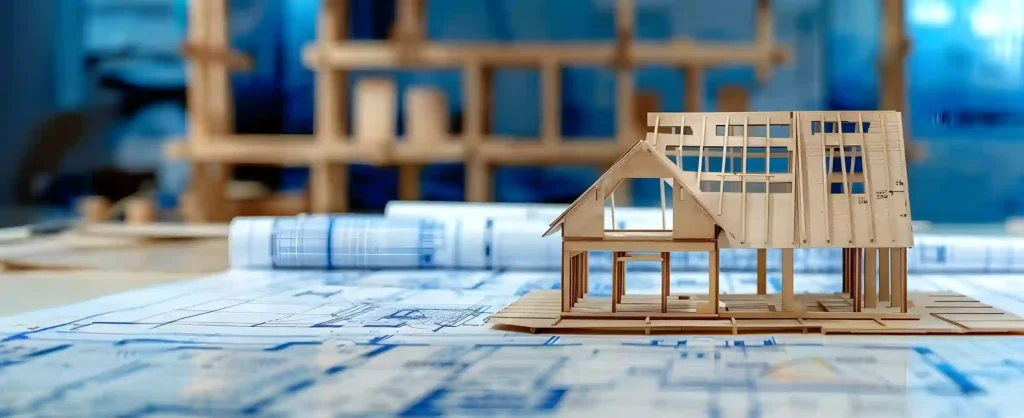The Future Homes Standard 2025 will enter consultation later this year, introducing a new set of minimum energy efficiency standards to the UK housing market. Decarbonisation is an essential element of the country’s plans to reach Net Zero by 2050 and, with the UK’s built environment accounting for roughly 40% of carbon emissions in 2022, retrofitting the existing housing stock while committing to more sustainable housebuilding will likely be at the top of the government’s agenda post-election.
At Concept Capital Group, we specialise in alternative investment opportunities that balance social impact with modern, streamlined approaches to existing markets. Our buy-to-let modular homes use sustainable materials and modern methods of construction to build contemporary energy efficiency standards into the manufacturing process. As such, all our homes meet the Future Homes Standard 2025 and the UK’s overarching commitment to lowering carbon emissions within the residential sector.
But what exactly does the Future Homes Standard 2025 entail for housing market stakeholders? Will landlords and property investors soon find themselves shelling out to level up their existing properties? Can modular housing simplify the process by serving as a cost-effective, sustainable alternative to retrofitting?
For everything you might need to know about the link between modular homes and decarbonisation, the team at Concept Capital Group is here to explain the Future Homes Standard 2025 and where investors like you fit in.
What is the Future Homes Standard 2025?
In 2019, the UK became the first major economy to pass net zero emissions laws. In doing so, it embarked on a nationwide socioeconomic mission to introduce sweeping sustainability measures within its infrastructure. Notorious for the poor energy efficiency and insulation of its existing housing stock (with 34% of households still living in poorly insulated, inadequate homes as of this year), the UK government quickly put the built environment and residential carbon emissions in its sights. As part of this commitment to decarbonisation within the housing market, a public consultation took place between October 2019 and February 2020. Its subject: the Future Homes Standard 2025.
The Future Homes Standard 2025 consultation proposed a significant shift in existing energy efficiency standards for residential properties. Its plans will require the UK’s housing market to ‘future-proof’ against upcoming Net Zero by 2050 targets by prioritising energy efficiency and sustainability in new housebuilding as well as the retrofitting of existing homes. To accomplish its goal of lowering the carbon emissions of all new homes built from 2025 onwards by 75-80%, the new legislation will primarily focus on improving the country’s heating and hot water systems to reduce total heat waste within the UK housing market.
As the name suggests, the Future Homes Standard 2025 is set for implementation in 2025, and will likely represent more than a few infrastructural challenges for landlords and property investors.
The Terms
As the result of extensive research into the impact of poor insulation and heating quality in residential homes, the Future Homes Standard 2025 will see the UK more fully embrace low-carbon heating and world-leading energy efficiency standards to promote sustainability in the housing market.
The detailed terms of the legislation are as follows:
- Enforcing a new, higher minimum standard for energy efficiency in new build homes
- Retrofitting and reconstructing existing properties to meet new minimum standards
- Reducing the use of gas heating systems and fuel appliances that emit high levels of carbon
- Increasing thermal efficiency and air tightness through window glazing and insulation
At the initial point of consultation, the Future Homes Standard 2025 proposed uplifts to parts F and L of the UK’s Building Regulations. Intended to lay the foundation for the eventual implementation of the legislation, these uplifts cover the conservation of fuel and power (Part L) and ventilation (Part F) in new homes.
Why Does the Housing Industry Need to Change and What Will Those Changes Be?
With the UK falling short of the decarbonisation advancements made by other European countries, a concerted drive to retrofit old homes while more rigorously vetting the quality of new ones will be instrumental in meeting net zero goals. This is partly due to the sheer impact of the built environment on the country’s carbon emissions and the relative inefficiency of its homes.
As it stands, the UK has done shockingly little to accelerate its progress towards Net Zero by 2050, with experts speculating that it will fail to reach carbon reduction targets at its current rate. A greater commitment to energy efficiency in new and existing housing could provide the significant boost to decarbonisation that the country currently needs to achieve its net zero goals.
For example, though it was originally intended to be scrapped, the Fabric Energy Efficiency Standard (FEES) will be evaluated as part of the Future Homes Standard 2025. This will ensure that the fabric used in residential buildings is optimised to reduce the energy needed to heat future homes. The efficacy of fabrics has historically been measured in U-Values, with lower U-Values indicating better energy efficiency. Under the Future Homes Standard 2025, these U-Values will use improved minimum standards to align with the upcoming UK Net Zero Carbon Buildings Standard. This would ultimately result in a superior benchmark for energy usage and carbon emissions in the UK’s built environment.
How Can Modular Housing Help Reach the Future Homes Standard 2025?
In many ways, modular housing is already ahead of the curve in terms of energy efficiency and carbon emissions. According to research by McKinsey, fully embracing modular construction could have a range of economic and ecological benefits including:
- A 50% improvement in construction speed
- A 20% reduction in construction costs for $22bn in annual savings across the US and Europe
- A reduction in lifecycle costs of up to 25% in some instances
- Improved build quality, including better energy and seismic performance
The McKinsey report also indicates that demand for modular housing is driven by a combination of labour and housing shortages. This suggests that countries such as the UK, the US and Australia will increasingly rely on modular construction as these challenges worsen. Likewise, modular construction covers a wide range of methods, allowing for disparities in complexity and scale that offer tenants and homeowners a degree of customisability that often matches that of a traditional home.
Investing in Sustainability with Concept Capital Group
At Concept Capital Group, we see alternative investments as the sustainable future of property development. As such, all our buy-to-let modular homes take advantage of low-impact construction methods to reduce the levels of carbon emissions and waste involved in getting them into the hands of clients and tenants.
Our focus on social impact means that decarbonisation is just another element of our corporate and investment strategies. When you invest in one of our homes, you invest in superior standards of manufacturing that ensure your investment will be as adaptable as you need it to be.
To learn more about how our modular homes can promote a more sustainable housing market, book a call with our team today.













